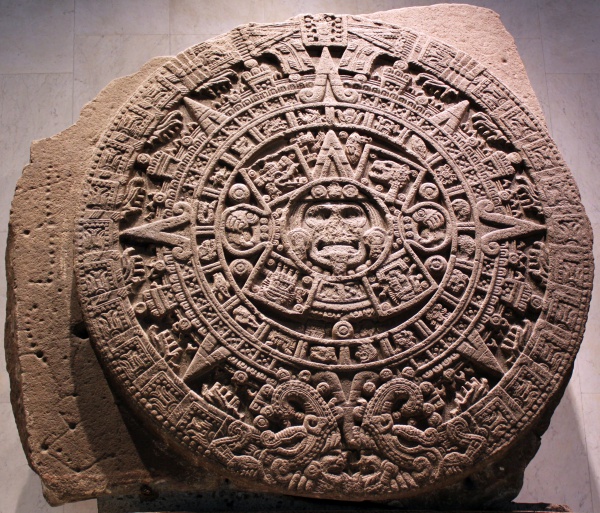Facts About Aztec sun stone
The Aztec Sun Stone, a remarkable piece of late Postclassic Mexica sculpture, is prominently displayed in Mexico City's National Museum of Anthropology. This monumental sculpture, measuring 358 cm in diameter and weighing an astounding 24,590 kg, is renowned for its intricate designs and detailed glyphs, showcasing the sophistication of Aztec culture. Following the Spanish conquest, the stone was buried in Mexico City's main square and remained concealed until its rediscovery in 1790. Initially believed to have been carved in the 1470s, recent studies suggest it was actually created between 1502 and 1521.
This monolith was crafted by the Mexica towards the end of the Mesoamerican Postclassic Period. It is believed that the stone originated from the Xitle volcano and was transported to Mexico-Tenochtitlan by thousands of people. The stone’s detailed carvings symbolize various aspects of Aztec cosmogony, such as cosmic cycles, warfare, and the dynamic relationship between gods and humans. At the center of the disk is a deity, possibly Tonatiuh or Tlaltecuhtli, surrounded by depictions of past eras and the Aztec calendar.
Over time, the interpretation of the stone has evolved. Early scholars linked it to astrology and chronology, but modern research continues to delve into its complex symbolism and cultural significance. The Sun Stone was discovered near the Templo Mayor in Mexico City, underscoring its connection to Aztec rituals and the state's use of religion and violence for control. Today, the image of the Sun Stone appears on Mexican coins and has been embraced as a symbol of modern Mexican identity.
After the Spanish colonization, the significance of the Sun Stone was often misunderstood. Its display next to a Catholic institution sparked debates about cultural appropriation and the need for decolonization. Other similar sculptures with calendrical depictions, such as the Stone of Tizoc and the Throne of Montezuma, can also be found in Mexico City's museums. These artifacts further illustrate the rich iconography and cultural depth of the Aztec civilization.

 Belize
Belize